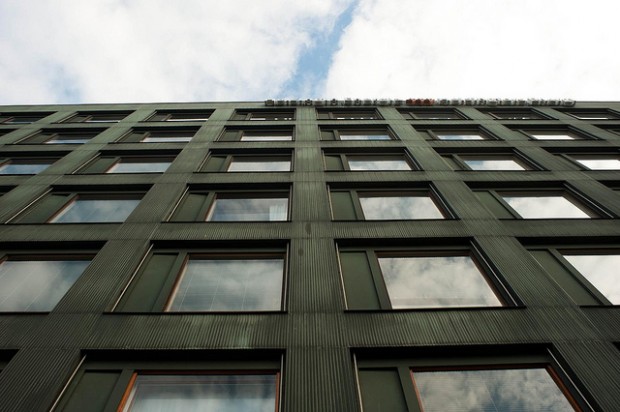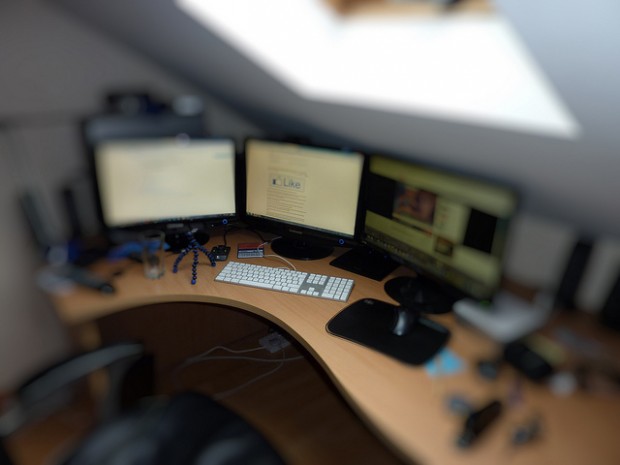
According to a recent Gallup poll,”three in 10 Americans say now is a good time to find a quality job.” That number may seem low — it’s about the same as it was last month — it’s actually one of the highest it’s been since the 2008 financial crisis. But in an economic climate where more and more workers are looking for alternate streams of income, including freelance work and creative side businesses, what do we mean when we say a “quality job”?
“Fat paychecks, light workloads, and countless vacation days don’t necessarily produce happy employees,” explains Forbes in a piece which highlights companies who go the distance to provide for their employees, “the happiest employees in the US credit their bliss to first-rate employee incentive programs, ample benefits, career advancement programs, and great work-life balance.”
Gallup doesn’t define what a good job actually is — which means that the Americans answering probably themselves have differing definitions. But what makes for happy workers has been studied at length, and it’s changed over time. In the previous century, the labor and farming divisions used to be considered the strongest economic drivers. And while construction, mining, and other reliable jobs have all been trending upwards, so have jobs which haven’t traditionally been counted or quanitified — like the creative pursuits. And, as they’ve historically had to do, employers are trying to keep up.
Good jobs, for example, didn’t used to include employer health care, something that’s practically expected. Health care as provided by employers was the product of increasing demand for labor, and the need for employers to be able to offer greater incentives lure more able-bodied, smarter workers during the 1920s and 1930s. Now, not only is health care a pretty basic provision of full-time, salaried employment (at least, in white-collar work), employers are upping the bar with wellness programs, on-site gyms, and other health and fitness perks.
Companies aren’t doing it selflessly, though; incentivizing good health among employees is smart for them, too. The CDC reports that “companies that support workplace health have a greater percentage of employees at work every day,” and that “workplace health programs can reduce presenteeism — the measurable extent to which health symptoms, conditions, and diseases adversely affect the work productivity of individuals who choose to remain at work.”
Numerous studies have shown that physically fit employees are happier, and thus, more productive and effective. Which means that employers literally stand to profit by offering perks to workers that keep them in good health and spirits. This push toward acknowledging total health and wellness of workers as a financial boon could be influencing workers — hence, the higher numbers of those who think it’s a good time for a good job.

Good jobs can also be determined by location. Even in traditionally strong employment fields like education, and business, the ability for remote work and telecommuting has helped employees not only choose where they work, but also where they live and how much time they spend at home. Advances in technological communication make working from home more plausible and desirable. Working from home has been hailed as a productivity play for employers — and the clever ones are catching up and letting workers stay home.
In CreativeLive’s inaugural Creative Jobs Report, survey participants illuminated other metrics for what makes happy employees. High wages, once thought to be the ultimate measure of what made a “good job” are being eschewed by more and more Americans, who instead opt for jobs that support their alternative skills and passions. According to that study, nearly as many adults (36%) as reported positive feelings about finding a good job also reported that they had the desire to leave their current job to pursue a career that allows them to be more creative. Nearly 30% said they would take a pay cut for a job that allowed them to be more creative.
A glance at the companies which are routinely ranked as top employers also help paint the picture of what Americans think of as a “good” job. Big names like Google and Apple dominate year after year, at least partially because their benefits — including creative problem solving and cushy benefits packages — have been touted for decades. But these employers also offer other, less-expected perks, which speak to the desire of workers.
“Google donates $50 for every five hours an employee volunteers,” reports Forbes. “Last year a new program sent employees to Ghana and India to work on community projects.”
But do volunteering and trips to perform charitable acts really make a job better? Yes, writes Geoffrey James for Inc.
“Contrary to popular belief, employees value many things more than the amount of money they’re being paid. If they’re treated right, employees will not only work for less, they’ll be happier and more productive as they do so.” Among the important factors he outlines, measurements like respect, support, and fairness rank highly, while freedom and independence are also key elements.
Workers are also beginning to turn to themselves to provide good jobs. Creative side businesses are slowly but steadily inching up in their economic impact, and one in three Americans is doing some kind of freelance work on the side. Not only is it a great time to find a job that meets all of our needs as workers, it’s also a great time to create that job ourselves.
All of this isn’t to say that traditionally good jobs, like those in labor and service, are drying up completely; service work and jobs in hospitality and other industries has bounced back since 2008, driving jobs numbers that most economic analysts praise. However, in the creative and artistic pursuits, and in the new freelance and sharing economy, hope is coming both from employers and employees.


